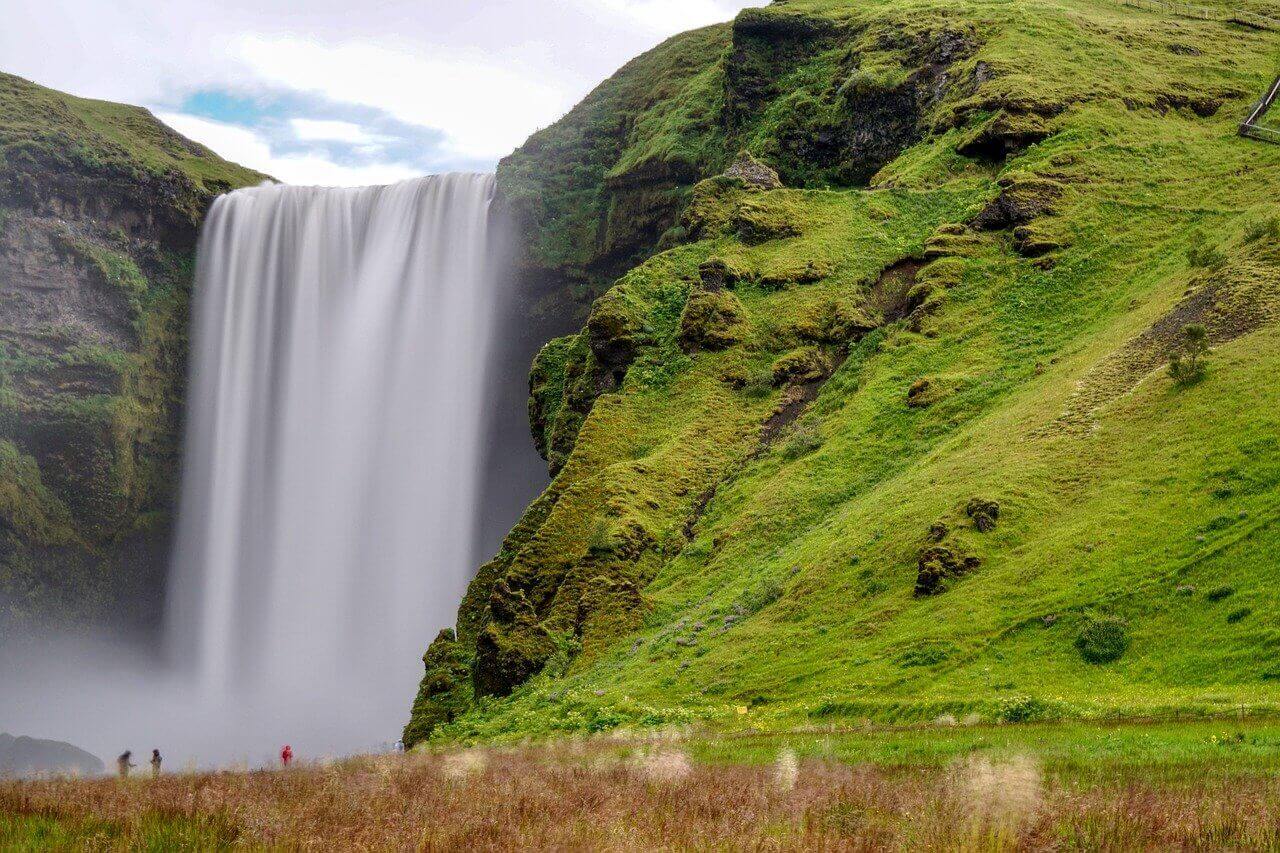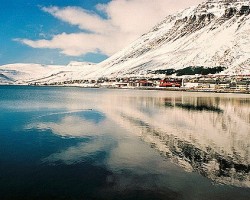Best time to go to Iceland for a perfect weather and where to go?
When is the best time to go to Iceland?
It is possible to travel to Iceland all year round. Indeed, the weather conditions are never very favorable for a stay in this country, but they do not prevent from making superb discoveries.
However, the best time to visit Iceland is during the summer season, from June to August. Although rain is frequent, temperatures are higher: around 15°C on average.
During this period, tourists flock in numbers to admire the midnight sun. The Arctic summer is indeed a good time to enjoy nature in this land of fire and ice. It is also the ideal time to observe whales and puffins.
However, summer corresponds to the peak tourist season. Given the crowds, it is advisable to book your stay in advance, especially as hotel accommodations are scarce in Iceland. Prices tend to rise, which should be taken into account for your travel budget.
Furthermore, the rest of the year allows you to discover other facets of Iceland.
In winter, you can admire the snow-covered waterfalls, but also engage in typical activities of this season such as visiting ice caves. Moreover, the long nights allow for observing numerous Northern Lights, especially between the months of October and April.
Finally, if you are wondering when to visit Iceland to avoid the crowds, you should favor the shoulder seasons. Indeed, autumn and spring will be ideal periods to discover the famous Golden Circle in a quieter atmosphere. For example, in May and September, there are some beautiful days, making this period also recommended for a trip to Iceland.
This text has been automatically translated.
Where and when to go based on the weather?
East of Iceland
Hofn, Vatnajökul National Park, Seyðisfjörður...
North of Iceland
Akureyri, Siglufjördur, Raufarhöfn...
South of Iceland
Landmannalaugar, Selfoss, Vík í Mýrdal...
South West of Iceland
Reykjavik, Grindavík, Keflavík...
West of Iceland
Borgarnes, Snaefellsnes, Ólafsvík...
Westfjords
Ísafjörður, Patreksfjörður, Djúpavík...
To get all the information about the climate and weather in Iceland for a specific month, click on the corresponding link below:
Iceland in january Iceland in february Iceland in march Iceland in april Iceland in may Iceland in june Iceland in july Iceland in august Iceland in september Iceland in october Iceland in november Iceland in december
Best time to travel to Iceland by cities
Climate and Weather in Iceland
Contrary to what one might imagine, temperatures in Iceland never drop very low, even if the weather on site is relatively unpredictable. Indeed, Iceland's climate, like that of Sweden and the United Kingdom, is influenced by the Gulf Stream. It is of a temperate oceanic type. Thus, it is really only in winter and in certain regions that temperatures can become negative. Generally, they range between -8 and 6°C from December to February. Therefore, during the rest of the year, the weather in Iceland is rather cool, even mild when summer arrives. Furthermore, it also rains a lot in Iceland throughout the year, but the days are long in summer, which means that the sun will inevitably be present during part of the day. Thus, Iceland does not have such bad weather after all! On the other hand, it is true that the climate in Iceland can change rapidly during the day. This can especially complicate your progress during hikes. Indeed, the sun can be present in the morning, and give way to heavy precipitation or severe fog in just a few hours. Therefore, it is always necessary to have extra layers of clothing and waterproof materials with you.

Climate in Iceland: Summer
Temperatures in Iceland are often cool, both in winter and summer. Thus, during the months of July and August, temperatures can range between 6 and 15°C on average. On a sunny day, the mercury can climb to around 25°C, but rarely higher.
Additionally, warm and covering clothing should be planned for your stay. Indeed, even in summer, precipitations are frequent, as well as a regular wind that tends to cool the atmosphere, especially near the coasts.
In Iceland, it rains on average 10 to 20 days per month in summer. These precipitations often come in the form of passing showers, but it is also possible to experience heavy showers lasting half a day.
However, this coolness and frequent rain are offset by unique meteorological phenomena, such as the midnight sun. Around June 21st, for about a week, the sun is always present in the sky at midnight. Furthermore, even if you don't travel in June to Iceland, you will actually rarely see the night fall between May and July as the sun sets around 11 pm and rises at 2-3 am.
Finally, it is important to note that the sea temperature is always cold in Iceland: it ranges from 5 to 10°C between winter and summer. Therefore, this is not the destination to head to for a beach vacation.
Climate in Iceland: Winter
During this period, Icelandic landscapes transform and suddenly become covered in snow and ice. Indeed, snowfall is regular in Iceland during winter. Additionally, some roads become impassable. Therefore, you will need to choose your itinerary and vehicle based on these conditions.
In winter, temperatures are generally between -8 and 6°C. However, they can become negative as early as October, especially inland and on glaciers.
Nevertheless, snow sometimes gives way to rainfall, especially on the coasts. For example, in Reykjavik, the average temperature is more around 1 to 3°C in winter.
Conversely, temperatures are colder in the northern part of the country by a few degrees. In Húsavík, for instance, they range from -6 to -2°C between January and March.
It is also possible to experience cold spells, from -10 to -20°C, when winds come from Greenland. However, these phenomena are not frequent and mainly affect sparsely inhabited inland areas.
Finally, winter is the ideal time to observe the Northern Lights in Iceland. These light phenomena are visible when it is dark, between the months of October and April.
Climate in Iceland by Regions
In general, the eastern coast of Iceland is sunnier than the western coast. In Hofn, for example, the sun is mostly present between showers, while in Keflavik, located in the west, the sky is often gray and cloudy.
It is also important to note that the midnight sun is only visible in the north of Iceland, such as in the city of Akureyri. Similarly, at the end of December, it is dark all day long: this is the polar night.
This text has been automatically translated.
Temperatures and rainfall in Iceland
On these 3 graphs, we present the evolution of temperatures of Iceland and month-by-month rainfall for the cities of Reykjavík, Akureyri, Borgarnes, Djúpavík and Grindavík, as well as the month-by-month sea temperature for coastal cities.
Peak visitor numbers and tourist seasons in Iceland
Find out when Iceland has its high tourist season (the period when the influx of tourists is highest) and off-peak tourist season using our data and figures.
Tourist seasons in Iceland
The months with low numbers of tourists are: January, February, March, April, May, June, September, October, November and December. The number of visitors to Iceland is high in: July and August.
- Very low season in Iceland: January, February, March, April, November and December.
- Low season in Iceland: May, June, September and October.
- Peak season in Iceland: July and August.
Figure: Visitor index for Iceland month by month
Average price for flights to Iceland
A return flight between New York City and Reykjavík is generally cheaper if you go in october ($ 365 on average): this is the best time for travellers on a tight budget. In contrast, you may end up paying $ 199 more for your airline ticket to Reykjavík if you go in july.
Find the best price for your flight Flight prices to Iceland
Where to go in Iceland?
This table allows you to see the maximum temperature for each city and our opinion on the weather month by month (see colour legend below the table).
| Cities | jan. | feb. | mar. | apr. | may | jun. | jul. | aug. | sep. | oct. | nov. | dec. |
| Reykjavík | 38°F | 38°F | 38°F | 43°F | 49°F | 54°F | 58°F | 58°F | 52°F | 45°F | 40°F | 36°F |
| Akureyri | 29°F | 31°F | 31°F | 38°F | 45°F | 54°F | 58°F | 56°F | 49°F | 40°F | 32°F | 29°F |
| Borgarnes | 38°F | 38°F | 38°F | 43°F | 49°F | 54°F | 58°F | 58°F | 52°F | 45°F | 40°F | 36°F |
| Djúpavík | 34°F | 34°F | 34°F | 40°F | 47°F | 54°F | 56°F | 54°F | 50°F | 41°F | 36°F | 32°F |
| Grindavík | 41°F | 41°F | 41°F | 43°F | 47°F | 52°F | 56°F | 56°F | 52°F | 47°F | 43°F | 41°F |
| Hofn | 40°F | 40°F | 40°F | 41°F | 45°F | 50°F | 54°F | 54°F | 50°F | 45°F | 41°F | 38°F |
| Ísafjörður | 32°F | 32°F | 32°F | 36°F | 41°F | 49°F | 52°F | 50°F | 47°F | 40°F | 34°F | 32°F |
| Landmannalaugar | 34°F | 36°F | 38°F | 41°F | 47°F | 52°F | 54°F | 54°F | 50°F | 43°F | 38°F | 34°F |
| Ólafsvík | 40°F | 40°F | 40°F | 41°F | 45°F | 50°F | 54°F | 54°F | 50°F | 47°F | 43°F | 40°F |
| Patreksfjörður | 32°F | 32°F | 32°F | 36°F | 41°F | 49°F | 52°F | 50°F | 47°F | 40°F | 34°F | 32°F |
| Raufarhöfn | 36°F | 36°F | 36°F | 38°F | 43°F | 49°F | 52°F | 54°F | 49°F | 43°F | 38°F | 36°F |
| Selfoss | 36°F | 38°F | 40°F | 43°F | 49°F | 56°F | 59°F | 58°F | 52°F | 45°F | 40°F | 36°F |
| Seyðisfjörður | 32°F | 34°F | 34°F | 40°F | 45°F | 54°F | 58°F | 56°F | 50°F | 41°F | 34°F | 31°F |
| Siglufjördur | 32°F | 32°F | 34°F | 40°F | 45°F | 54°F | 56°F | 56°F | 49°F | 41°F | 34°F | 31°F |
| Snaefellsnes | 36°F | 36°F | 36°F | 40°F | 47°F | 52°F | 56°F | 54°F | 50°F | 43°F | 38°F | 34°F |
| Vatnajökul National Park | 34°F | 36°F | 38°F | 41°F | 47°F | 52°F | 54°F | 54°F | 50°F | 43°F | 38°F | 34°F |
| Vík í Mýrdal | 34°F | 36°F | 38°F | 41°F | 47°F | 52°F | 54°F | 54°F | 50°F | 43°F | 38°F | 34°F |
| Arnarstapi | 40°F | 40°F | 40°F | 41°F | 45°F | 50°F | 54°F | 54°F | 50°F | 47°F | 43°F | 40°F |
| Asbyrgi Canyon | 36°F | 36°F | 36°F | 38°F | 43°F | 49°F | 52°F | 54°F | 49°F | 43°F | 38°F | 36°F |
| Askja | 29°F | 31°F | 32°F | 38°F | 45°F | 54°F | 58°F | 56°F | 49°F | 40°F | 32°F | 27°F |
Legend:
tolerable weather
bad weather
very bad weather
About Iceland
What can I do in Iceland?
Beaches / swimming
Nature and countryside
Culture and heritage
Sports
Family travel
Crafts / shopping
Gastronomy
Nightlife
Is this weather information for Iceland reliable?
Climate data for Iceland has been gathered every day since January 2009. The analysis of these meteorological data for Iceland allows us to determine the average for each month in Reykjavík, Akureyri, Borgarnes, Djúpavík, Grindavík, Hofn, Ísafjörður, Landmannalaugar, and 46 other cities.
So yes: this data is reliable except in cases of temporary climate disruption in the region.







